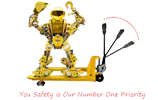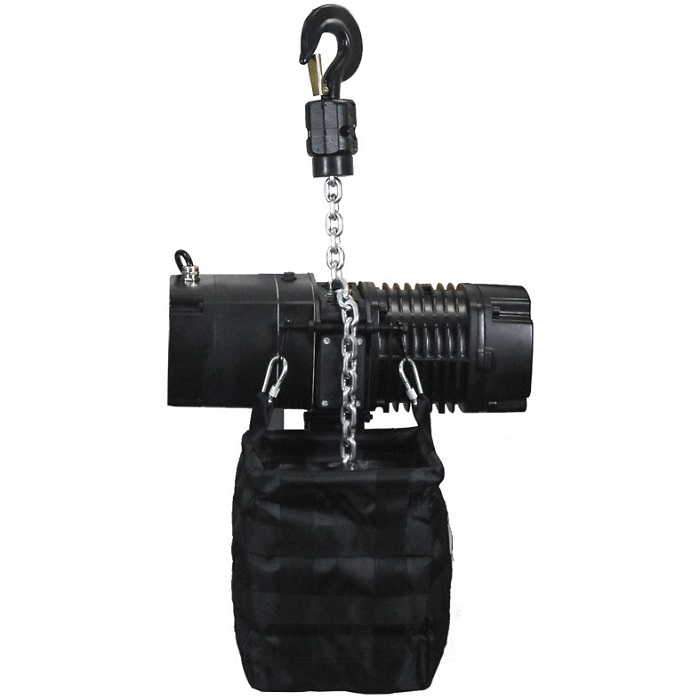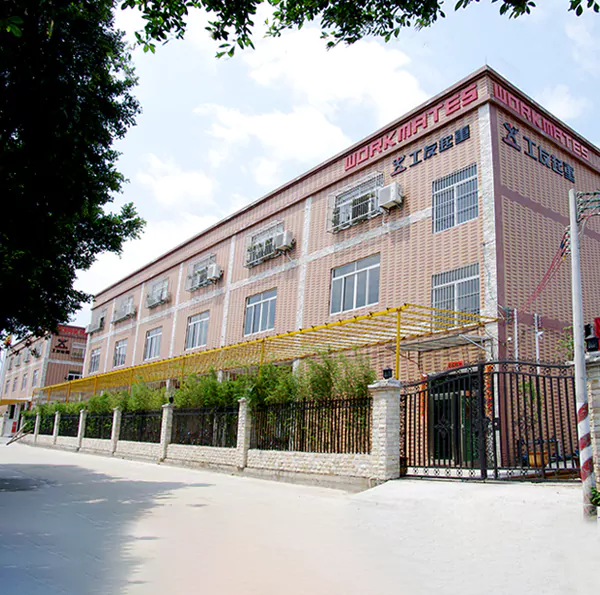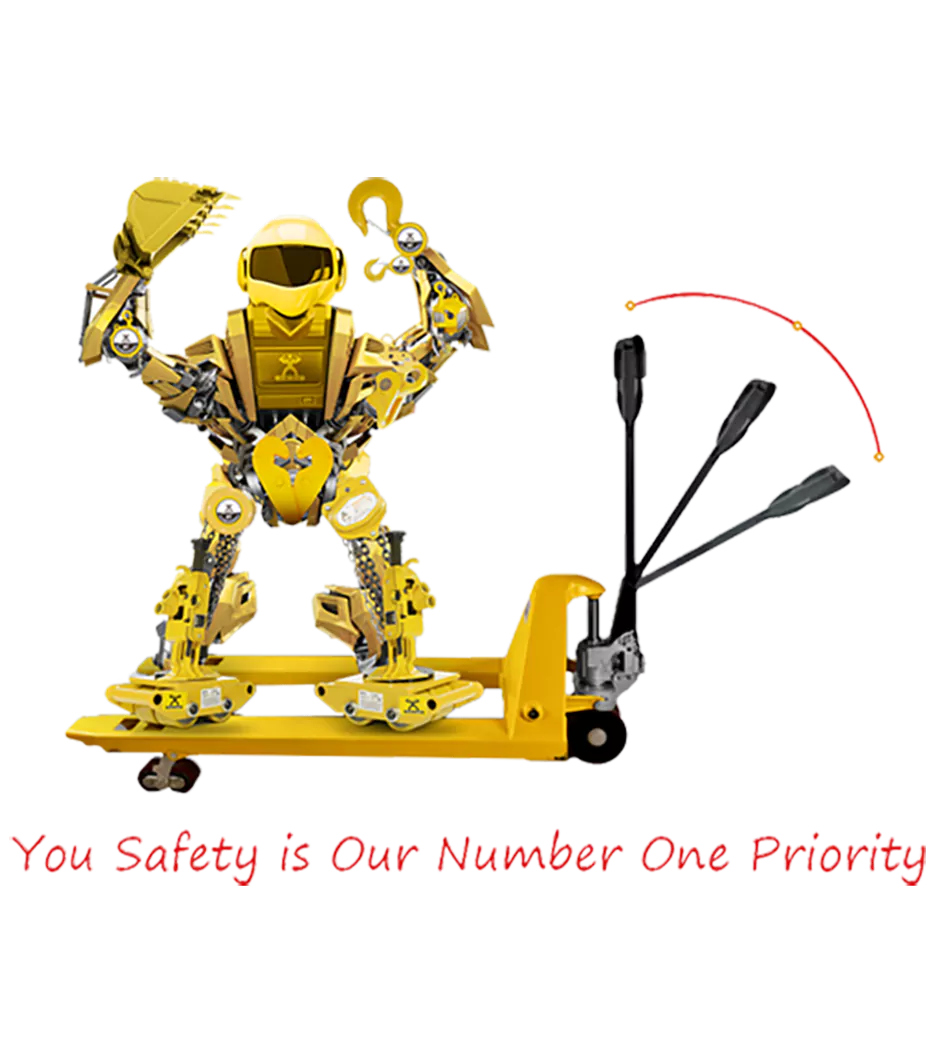In the bustling arenas of construction sites, manufacturing plants, and theatrical stages, the unsung hero silently shoulders the weight of heavy loads, effortlessly lifting and maneuvering materials with precision and ease. This hero is none other than the chain hoist, a mechanical marvel that has been a cornerstone of industrial operations for decades.
Welcome to “Mastering the Mechanics: A Comprehensive Guide to Chain Hoists,” where we embark on a journey to unravel the intricate workings, diverse applications, and indispensable role of chain hoists in various industries. From the clanking gears of manual models to the silent hum of electric variants, join us as we delve into the heart of these essential lifting devices, unlocking their secrets and empowering readers with the knowledge to wield their power effectively and safely.
Introduction to Chain Hoists
A chain hoist is a mechanical device used for lifting and lowering heavy loads vertically. It consists of a chain or lifting mechanism that wraps around a drum or sprocket, powered either manually or by electric, pneumatic, or hydraulic means. This versatile tool is designed to provide controlled lifting and precise positioning of loads in diverse industrial settings.
Brief History and Evolution:
The history of chain hoists traces back to ancient civilizations, where rudimentary pulley systems were used to lift heavy objects. Over time, advancements in engineering and metallurgy led to the development of more sophisticated hoisting mechanisms. The Industrial Revolution further propelled innovation with the introduction of steam-powered hoists, that revolutionized manufacturing and construction processes.
In the 20th century, the advent of electric motors and hydraulic systems brought about significant improvements in efficiency, safety, and versatility, paving the way for modern chain hoists as we know them today.
Importance and Applications in Various Industries:
Chain hoists for sale play a crucial role in a wide range of industries, offering unparalleled lifting capabilities and reliability. In construction and engineering, they are indispensable for lifting heavy materials and equipment to great heights and facilitating the erection of skyscrapers, bridges, and infrastructure projects.
In manufacturing and warehousing, chain hoists streamline production processes by effortlessly moving heavy components and goods along assembly lines or within storage facilities. Moreover, they are essential in the entertainment industry for stage rigging, enabling the seamless suspension and movement of lighting fixtures, audio equipment, and set pieces during concerts, theatrical performances, and film productions.
From automotive repair shops to shipyards, from mining operations to agricultural facilities, chain hoists find applications in virtually every sector where heavy lifting is required, underscoring their universal significance in modern industrial operations.
Types of Chain Hoists
1. Manual Chain Hoists
Manual chain hoists, also known as hand chain hoists, are operated by hand cranking a chain to lift or lower a load. They are simple in design, reliable, and versatile, making them suitable for various applications where power sources may be limited or unavailable. Manual chain hoists are commonly used in construction, maintenance, and rigging tasks, offering precise control and ease of operation in confined spaces or remote locations.
2. Electric Chain Hoists
Electric chain hoists utilize an electric motor to power the lifting mechanism, eliminating the need for manual effort. They are preferred for heavy-duty lifting applications requiring frequent or prolonged use, as they offer higher lifting capacities and faster operation compared to manual hoists. Electric chain hoists are equipped with controls for precise positioning and safety features such as overload protection and emergency stop mechanisms. They are widely used in manufacturing, warehousing, and assembly operations where efficiency and productivity are paramount.
3. Pneumatic Chain Hoists
Pneumatic chain hoists, also known as air chain hoists, rely on compressed air as the power source to lift and lower loads. They are suitable for environments where electricity is not readily available or where electric motors may pose a safety risk due to the presence of flammable gasses or dust. Pneumatic chain hoists are valued for their durability, reliability, and ability to operate in harsh conditions such as foundries, chemical plants, and offshore installations. They offer smooth and precise load control, making them ideal for lifting delicate or sensitive materials.
4. Hydraulic Chain Hoists
Hydraulic chain hoists utilize hydraulic fluid to power the lifting mechanism, offering high lifting capacities and smooth, controlled operation. They are commonly used in heavy-duty industrial applications such as shipbuilding, mining, and construction, where large loads need to be lifted with precision and safety. Hydraulic chain hoists are known for their robustness, resistance to harsh environments, and ability to operate at extreme temperatures. They are favored for their reliability and low maintenance requirements, although they may require a hydraulic power source and additional installation considerations.
5. Comparison of Different Types: Advantages and Disadvantages
1. Manual Chain Hoists:
Advantages: Simple operation, reliability, and versatility.
Disadvantages: Limited lifting capacity, slower operation, requires physical effort.
2. Electric Chain Hoists:
Advantages: High lifting capacity, fast operation, precise control.
Disadvantages: Dependence on electricity, higher initial cost, and maintenance requirements.
3. Pneumatic Chain Hoists:
Advantages: Suitable for hazardous environments, durable, smooth operation.
Disadvantages: Dependence on compressed air and limited lifting capacity compared to electric hoists.
4. Hydraulic Chain Hoists:
Advantages: High lifting capacity, smooth operation, low maintenance.
Disadvantages: Dependence on the hydraulic power source, the potential for fluid leaks, and higher initial cost.
Each type of chain hoist offers unique advantages and is suited to specific applications based on factors such as load capacity, operating environment, and required level of control. Understanding the differences between these types allows users to choose the most appropriate hoist for their needs, optimizing efficiency, safety, and productivity.
Components of a Chain Hoist
1. Load Chain
The load chain is the primary component responsible for lifting and supporting the load. It consists of interlocking links made of high-strength alloy steel or other durable materials capable of withstanding heavy loads. The load chain is designed to provide reliable and secure lifting while maintaining flexibility and resistance to wear and fatigue.
2. Lift Mechanism
The lift mechanism comprises gears, sprockets, and other components that transmit power from the hoist’s motor or manual drive to the load chain. In manual chain hoists, the lift mechanism typically includes a hand chain or lever that is operated by the user to raise or lower the load. In electric, pneumatic, or hydraulic chain hoists, the lift mechanism may consist of gears, shafts, and brakes that are driven by the respective power sources to control the movement of the load chain.
3. Chain Pulley Block
The chain pulley block, also known as the chain block or hoist block, is the housing or frame that encloses the load chain and lift mechanism. It provides support and guidance for the load chain, ensuring smooth and stable operation during lifting and lowering. The chain pulley block may include features such as guide rollers, bearing surfaces, and protective covers to minimize friction, wear, and exposure to contaminants.
4. Hooks and Latches
Hooks and latches are essential components of the chain hoist that secure the load to the lifting mechanism and prevent accidental disengagement during operation. The load hook is attached to the end of the load chain and is used to connect to the load being lifted. It is typically equipped with a safety latch or latch mechanism that engages with the load to ensure secure attachment and prevent slippage. The bottom hook, also known as the lower hook or suspension hook, is used to connect the chain hoist to the support structure or lifting point.
5. Control Systems (for Electric Chain Hoists)
In electric chain hoists, control systems are integrated into the hoist to regulate the operation of the motor, lift mechanism, and other functions. These control systems may include pendant controls, push-button stations, or wireless remote controls that allow the operator to initiate and control the lifting, lowering, and directional movement of the load.
Electric chain hoists may also feature safety devices such as limit switches, overload protection, and emergency stop buttons to ensure safe and efficient operation.
Each component of the chain hoist plays a vital role in its overall function and performance, contributing to reliable and safe lifting operations in various industrial settings. Regular inspection, maintenance, and proper usage of these components are essential to ensuring the longevity and effectiveness of the chain hoist.
Conclusion:
In conclusion, when considering the purchase of chain hoists at wholesale costs, Gongyougroup stands out as a reliable and experienced provider. With over 20 years of expertise in production, exporting, and after-sale service, Gongyougroup is committed to delivering high-quality products that meet the diverse needs of customers worldwide.
With three factories located in Hebei Province, north of China, Gongyou Group boasts significant manufacturing capabilities. One factory specializes in producing hand pallet trucks and hand pallet stackers, with a remarkable capacity of 10,000 pieces per month. Another factory focuses on the production of chain hoists and lever hoists, with a capacity of 15,000 pieces per month. Additionally, Gongyougroup operates a factory dedicated to manufacturing webbing slings and ratchet straps, producing up to 50,000 pieces per month.
By choosing Gongyougroup as your chain hoist supplier, you can benefit from a comprehensive range of lifting and material handling solutions, all manufactured to the highest standards of quality and reliability. Whether you require chain hoists for construction projects, industrial applications, or warehousing operations, Gongyougroup’s extensive experience and production capacity ensure timely delivery and exceptional service.
For wholesale inquiries or to learn more about Gongyougroup’s products and services, feel free to contact us. With our commitment to customer satisfaction and dedication to excellence, Gongyougroup is your trusted partner for all your chain hoist needs.







